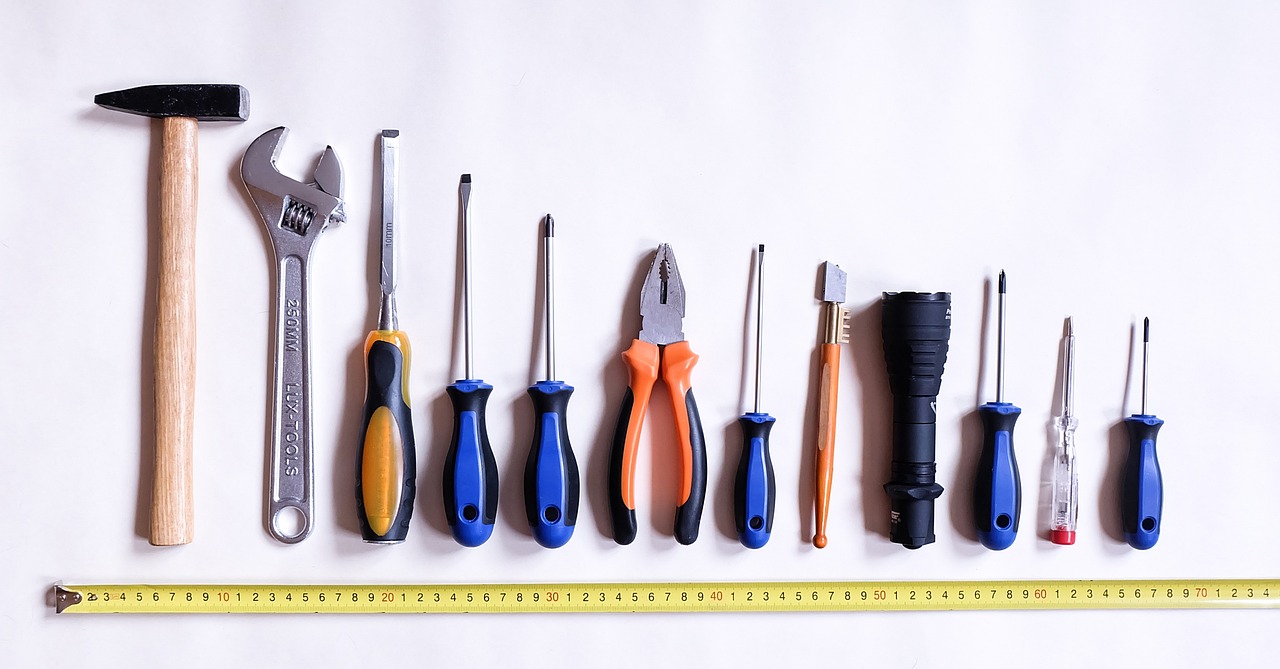
Bike Maintenance Tools Every Cyclist Should Own
Regular bike maintenance is essential for ensuring a smooth and safe ride. Whether you're a commuter, weekend rider, or competitive cyclist, keeping your bike in top condition will improve its longevity, prevent breakdowns, and enhance your cycling experience. To do this, having the right bike maintenance tools is crucial. This article will guide you through the essential bike maintenance tools every cyclist should own, so you can handle minor repairs and keep your bike performing optimally.
1. Bike Pump: Keep Your Tires Properly Inflated
A bike pump is one of the most essential tools for every cyclist. Proper tire pressure ensures a smooth ride, reduces the risk of flats, and increases your bike’s overall efficiency. Under-inflated tires make pedaling harder and can lead to rim damage, while over-inflated tires are more susceptible to blowouts.
Types of Bike Pumps:
- Floor Pump: Ideal for home use, floor pumps are efficient and usually come with a pressure gauge, allowing you to inflate your tires to the correct pressure. They’re best for quick and thorough inflation.
- Mini Pump: This portable pump is small enough to fit in a saddlebag or attach to your bike frame. It’s essential for on-the-go repairs, especially if you experience a flat tire mid-ride.
- CO2 Inflator: A compact and fast option, CO2 inflators use compressed carbon dioxide to inflate your tires. These are perfect for quick repairs during races or long rides.
2. Tire Levers: A Must for Flat Repairs
Flat tires are one of the most common issues cyclists face. Having a set of tire levers is essential for changing tubes or repairing punctures. Tire levers help you remove the tire from the rim without damaging it.
How to Use Tire Levers:
- Insert the lever under the edge of the tire bead.
- Pry the tire away from the rim.
- Use the hooked end of the lever to hold the tire in place.
- Slide the second lever around the rim to fully remove the tire.
Tire levers are inexpensive and lightweight, making them a must-have in any cyclist’s repair kit.
3. Multi-Tool: The Swiss Army Knife for Cyclists
A multi-tool is a compact and versatile tool that combines various wrenches, screwdrivers, and other repair tools into one device. It's perfect for quick adjustments or minor repairs while you're out riding.
Key Features of a Good Multi-Tool:
- Allen (Hex) Keys: Most bike components are secured with hex bolts. Common sizes include 4mm, 5mm, and 6mm hex keys.
- Screwdrivers: Flathead and Phillips screwdrivers are useful for adjusting derailleur screws or tightening components.
- Chain Tool: A chain tool is essential for fixing a broken chain. Some multi-tools come with a chain breaker to remove or install links.
- Torx Keys: Many modern bikes use Torx bolts, especially for disc brake rotors. A T25 Torx key is essential for these tasks.
Investing in a high-quality multi-tool can save you from being stranded on the road, as it allows you to fix a variety of common issues.
4. Chain Tool and Chain Wear Indicator
A well-maintained chain is key to a bike’s performance. Chains wear out over time and, if left unchecked, can damage other drivetrain components like the cassette and chainrings. A chain tool and chain wear indicator are essential for keeping your chain in good shape.
Chain Tool:
- A chain tool allows you to remove or reconnect chain links, which is useful when replacing a chain or fixing a broken one. Chain tools are usually included in multi-tools but can also be purchased separately.
Chain Wear Indicator:
- This tool helps you measure how much your chain has stretched over time. A stretched chain can lead to poor shifting performance and faster wear on other drivetrain components. By regularly checking chain wear, you’ll know when it’s time to replace it.
5. Bike Stand: For Easy Repairs and Maintenance
A bike stand holds your bike securely off the ground, allowing you to perform repairs and maintenance more easily. Whether you’re adjusting gears, lubricating the chain, or cleaning the drivetrain, a bike stand provides stability and convenience.
Benefits of a Bike Stand:
- Hands-Free Work: With a bike stand, you can rotate the pedals, adjust the gears, or work on the wheels without having to hold the bike.
- Better Ergonomics: A bike stand raises the bike to a comfortable working height, reducing the need to bend over or kneel.
- Stability: The stand keeps the bike steady, making it easier to perform detailed tasks like tuning brakes or derailleurs.
A bike stand might seem like a luxury, but it quickly becomes invaluable for anyone serious about maintaining their bike at home.
6. Torque Wrench: Prevent Over-Tightening
Modern bikes, especially carbon fiber models, have specific torque requirements for bolts to avoid damage. A torque wrench is a precision tool that ensures you’re tightening bolts to the manufacturer’s recommended settings. Over-tightening can strip threads or crack fragile components, while under-tightening can result in loose parts.
How to Use a Torque Wrench:
- Set the wrench to the correct torque value, as specified by the bike’s manufacturer.
- Use it to tighten bolts on components such as the seat post, stem, and handlebars.
- The wrench will click when the correct torque is reached, preventing you from overtightening.
This tool is especially important for working on carbon fiber bikes, as carbon components are more susceptible to damage from incorrect torque settings.
7. Cassette Lockring Tool and Chain Whip
If you plan to perform more advanced bike maintenance, such as replacing the cassette, you’ll need a cassette lockring tool and chain whip.
Cassette Lockring Tool:
- This tool is used to remove or tighten the lockring that holds the cassette in place on the rear wheel.
Chain Whip:
- The chain whip holds the cassette in place while you loosen or tighten the lockring. It prevents the cassette from spinning when you apply torque.
Together, these tools make it easy to remove the cassette for cleaning or replacement, which is especially important if you ride in muddy or wet conditions.
8. Bottom Bracket Tool: Keep Your Crankset Running Smoothly
The bottom bracket is the part of the bike that connects the crankset to the frame and allows it to rotate. Over time, bottom brackets can wear out or develop creaks. A bottom bracket tool allows you to remove and install this component for maintenance or replacement.
How to Use a Bottom Bracket Tool:
- Remove the crankset from the bike using a crank puller.
- Use the bottom bracket tool to unscrew and remove the bottom bracket.
- Clean or replace the bottom bracket and use the tool to reinstall it, ensuring it’s securely tightened.
While this is a more advanced tool, it’s essential if you’re serious about maintaining your bike’s drivetrain.
9. Pedal Wrench: For Easy Pedal Installation and Removal
A pedal wrench is designed specifically for installing and removing pedals. While some pedals can be removed with an Allen key, a pedal wrench is necessary for those with flat-sided axles.
How to Use a Pedal Wrench:
- Position the wrench on the flat sides of the pedal axle.
- Apply force in the correct direction (pedals have reverse threads on the left side) to loosen or tighten the pedals.
- Clean and grease the pedal threads before reinstalling them to prevent them from seizing.
A pedal wrench is an affordable tool that makes pedal maintenance and swapping much easier.
10. Spoke Wrench: For Truing Your Wheels
A spoke wrench is used to adjust the tension of the spokes in your bike’s wheels. Over time, spokes can loosen, causing the wheel to become untrue or wobbly. A properly tensioned wheel is crucial for smooth riding and braking.
How to Use a Spoke Wrench:
- Identify the loose or uneven spokes by spinning the wheel and looking for wobbles.
- Use the spoke wrench to tighten or loosen the affected spokes in small increments.
- Be careful to balance spoke tension evenly to avoid creating new problems.
Truing a wheel requires practice, but a spoke wrench is an invaluable tool for keeping your wheels in good condition.
Conclusion
Owning the right bike maintenance tools allows you to take control of your bike’s upkeep, ensuring it runs smoothly and efficiently. From essential tools like a bike pump and multi-tool to more specialized equipment like a chain tool and torque wrench, each item plays a crucial role in keeping your bike in top condition.
By regularly maintaining your bike and addressing minor issues before they become major problems, you’ll enjoy a better riding experience, save money on repairs, and extend the lifespan of your bike. As you gain more experience with bike maintenance, you’ll develop the confidence to handle more advanced repairs, making your cycling journey even more rewarding. Whether you’re a beginner or a seasoned cyclist, investing in these tools will help you stay prepared for any situation on the road or trail.
